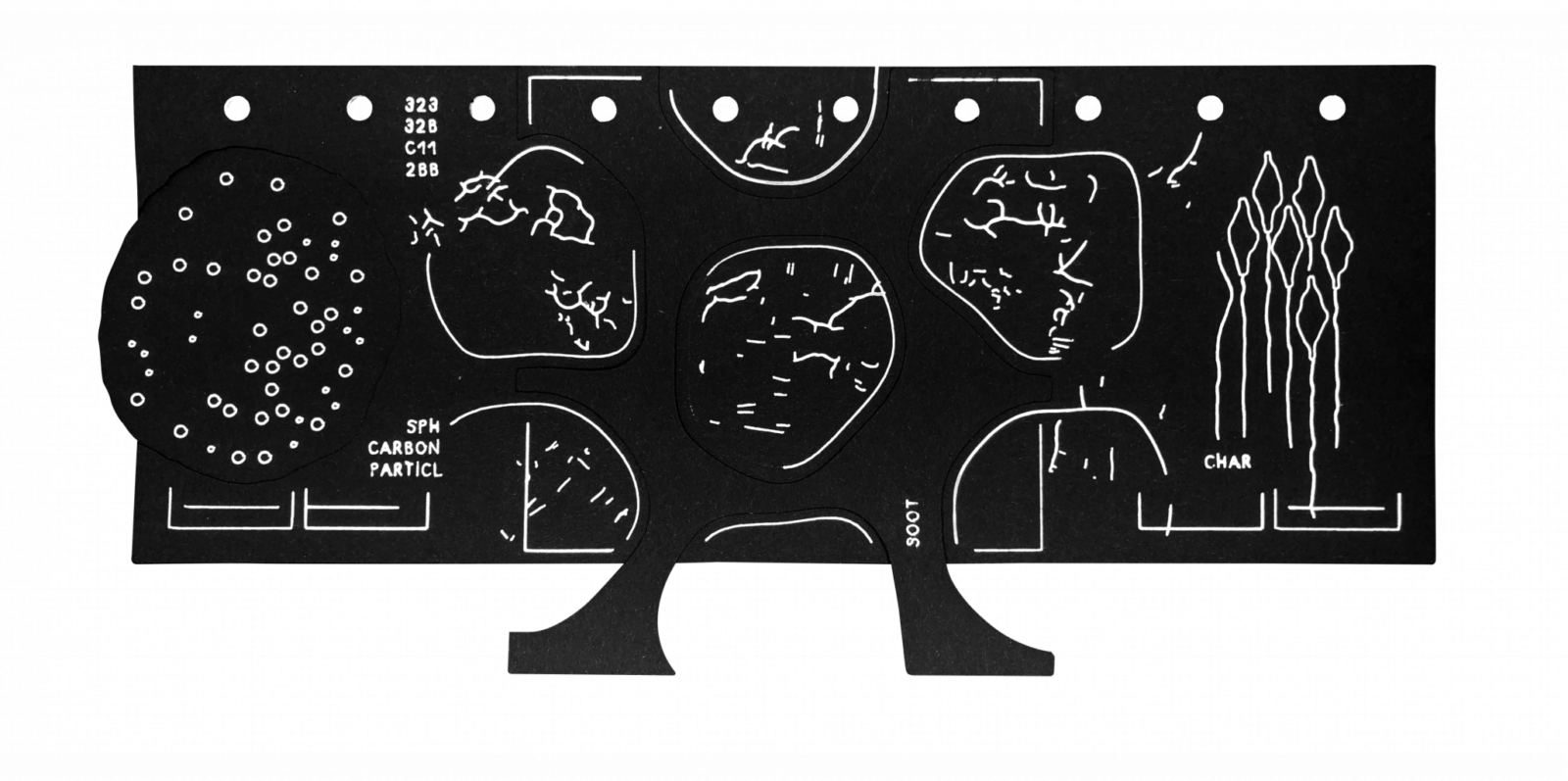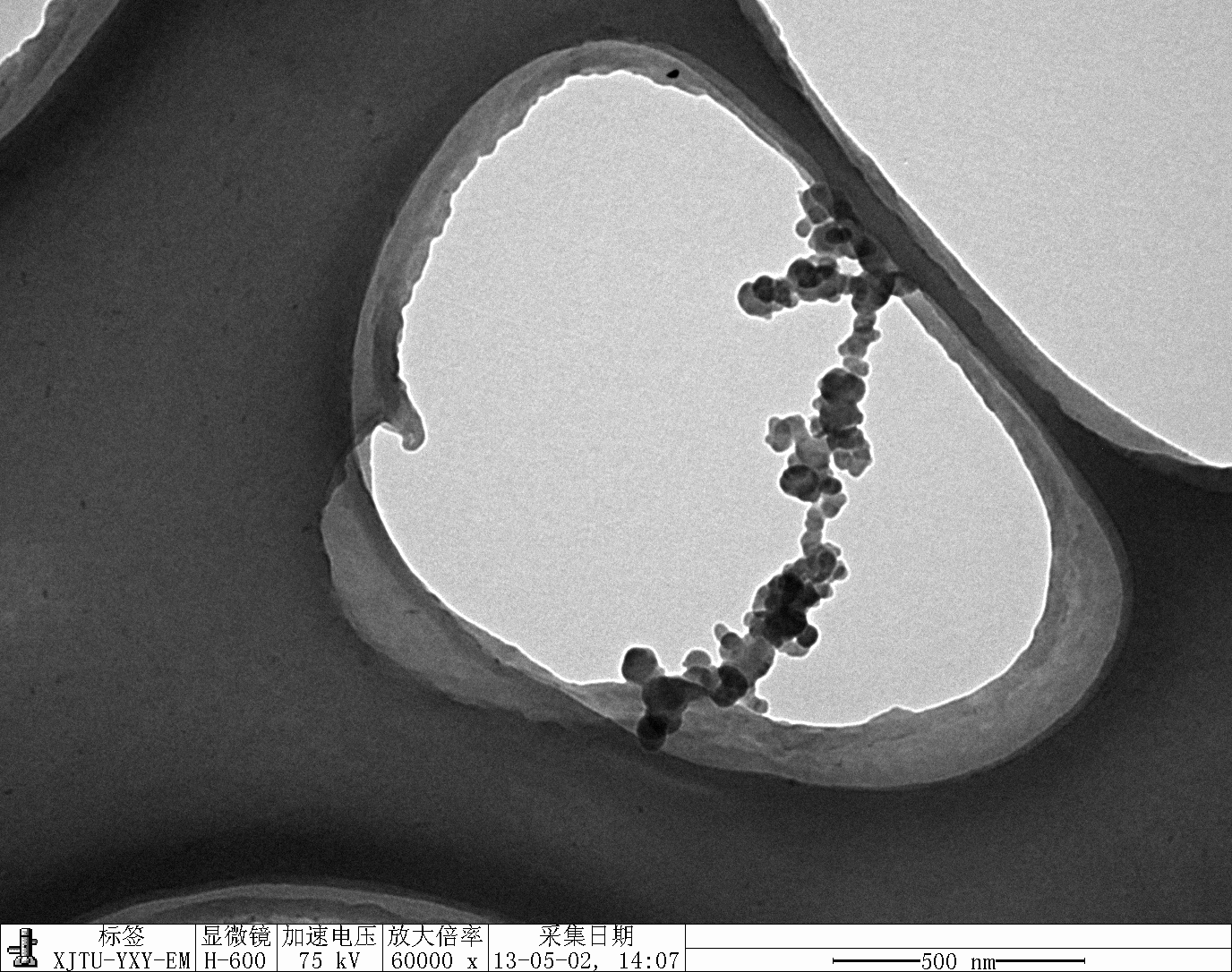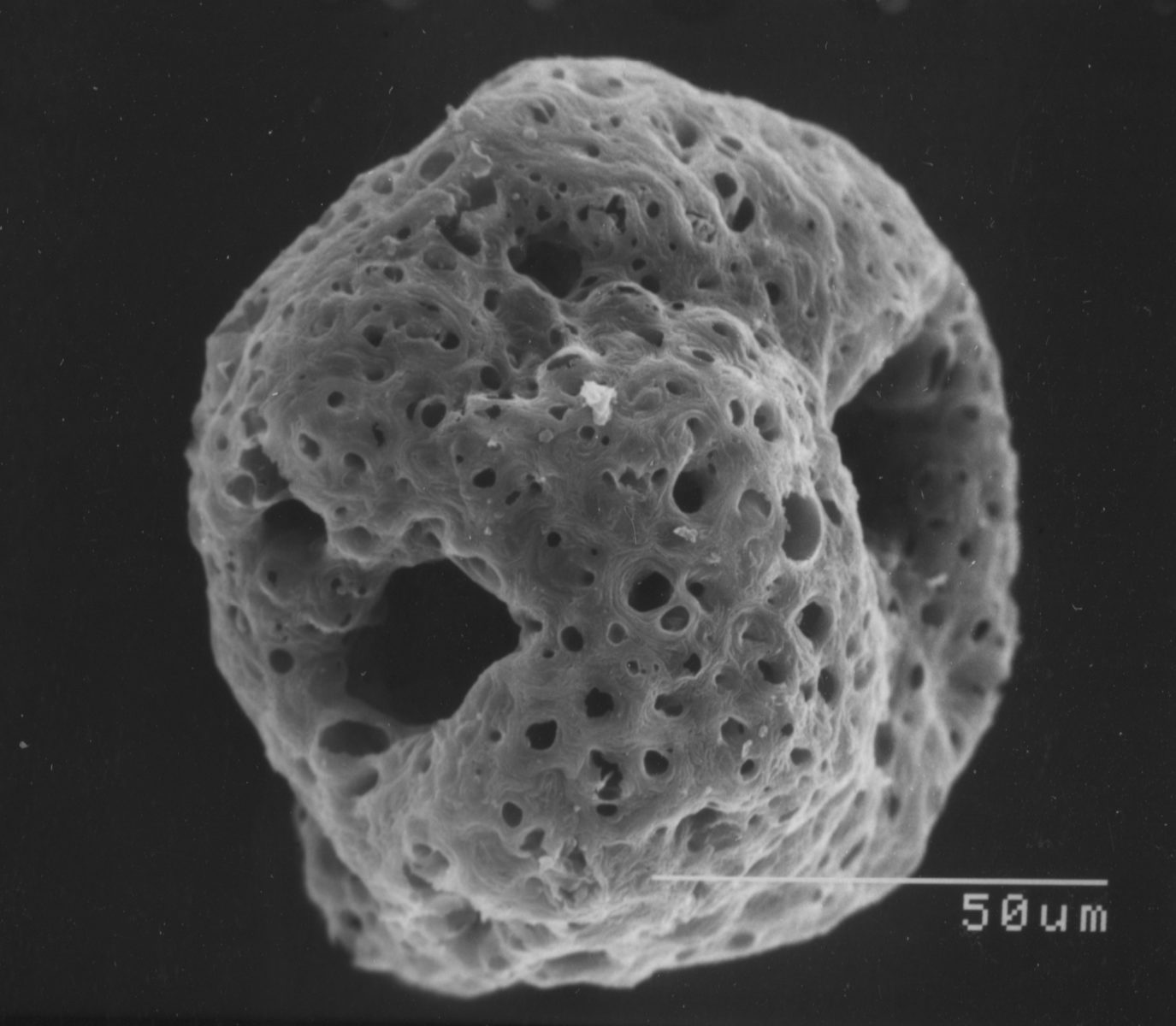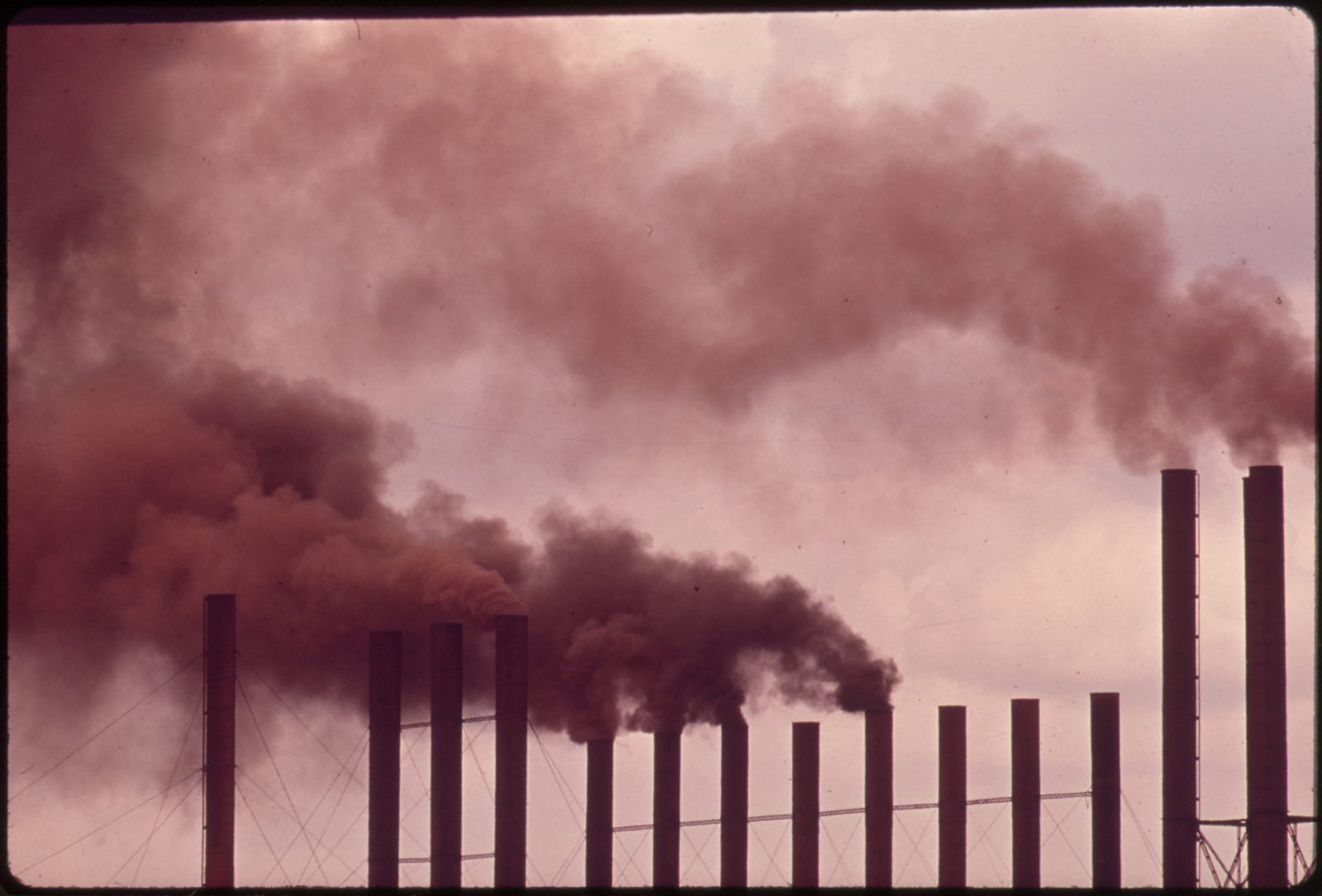Back to essay
How to read
?
This graph displays the temporal occurrences and relations of events within the essay. By scrolling through the text, key events are highlighted in the graph. Clicking on the graph expands it and arranges the events according to their position in the essay.
Do you want to help us with our research? Please, share your feedback with us!
The visualization is part of the VIDAN research project at UCLAB / FH Potsdam. More information.
Combustion Products as Markers for the Anthropocene
The long career of fire
Since the some two billion years ago, and the roughly half a billion years ago, Earth has been a fiery planet. For the last half million years or more, , in most cases Homo sapiens. Of that anthropogenic fire, much has been accidental, but a growing proportion has served specific human ends. The date of is uncertain but probably lies between 1.5 and 0.5 million years Before Present (BP). According to one influential hypothesis, it might have happened early enough to help make our ancestors into big-brained humans:1 expanded the repertory of digestible foods, including high-quality animal proteins otherwise inedible for creatures with our teeth, jaws, and stomachs. Fire allowed our ancestors to out-source part of the digestion process.
Aside from , which involved tiny amounts of fuel, the main purpose to which early humans put fire was . Burning encouraged the growth of fresh grass and shoots, creating landscapes conducive to large herbivore herds, and thus to human hunting. The use of combustion for these purposes began in Africa but travelled with humans as they colonized the globe after about 100,000 years BP. In arid Australia, indigenous Australians (Aboriginals) relied on controlled fire known as “firestick farming” not only to boost populations of kangaroo and wallaby, but also of edible plants such as bush potato (Ipomoea costata). also extended to high latitude landscapes where allowed Pleistocene humans to survive in Siberia and northern North America. The extent of these varied with climate, population size, and distribution. Sedentary societies around the world developed , the oldest of which dates from East Asia some 20,000 years BP. , using for fuel, appeared on a small scale about 8,000 years BP in Southwest Asia. indicate a range of social, foodstuff, and technological complexities. Stratigraphic evidence of combustion occurs as a range of prepared structures or features (hearths), stratified deposits of ash, charcoal, and charred waste, as well as fuel/foodstuffs expressed in stable isotopes of carbon and nitrogen.2
The first genuinely came with . , , and were smelted from rock on small scales in southeastern Europe and southwestern Asia from the sixth millennium BCE, although earlier finds are likely in future. By about 3500 BCE, smiths in Mesopotamia had figured out how to combine copper with tin to make , a much more useful metal than any available before, and this greatly expanded the scale of and . served as fuels. The scale of expanded once again when smiths developed the complicated procedures for making . melts at temperatures above 1,538 degrees Celsius, beyond the range of early furnaces, and requires elaborate efforts to remove impurities. By 2000 BCE smiths in Anatolia had begun , and by 1200 BCE in Anatolia and adjacent lands. It may have developed independently in the Great Lakes region of Africa and in northern India. In any case, the abundance of iron ore in the Earth’s crust allowed iron working to spread throughout large parts of Eurasia and Africa, marking a . By 300 BCE, iron forges were at work from Cameroon to Ireland to Korea. The global center of iron production became China, where were invented in the final centuries BCE. , which burns hotter than wood, served as the primary fuel for . Metalworking peaked in the southern Andes after 1100 CE but elsewhere in the pre-Columbian Americas remained small in scale. Overall, fuel combustion for before 1492 stood orders of magnitude below China’s.
Beyond , combustion formed an essential step in generating heat in several . , made by heating limestone to 1,000 degrees Celsius, was used in plaster by the eighth millennium BCE in what is now Jordan; eventually it was used in mortar, cement, tanning, and fertilizer. with fire developed in China, India, and Mesopotamia in the fifth and fourth millennia BCE. dates to the third millennium BCE. Sugar-refining, salt-making, and several other ancient industries also made use of combustion.3 The during the era of the Roman and Han Chinese empires in the second century BCE to the second century CE. Airborne pollution from Roman lead smelting found in Greenland ice cores and lake sediment cores across Europe indicates that in the first and second centuries BCE. A took place under China’s Song dynasty in the tenth and eleventh centuries CE. Here, was used for the first time on a large scale.
became the primary fuel for industrial purposes following James Watt’s developments of Thomas Newcomen’s in the UK in the late eighteenth century. This inaugurated a new phase in the history of combustion, although the resulting “ ” took almost two hundred years to develop around the globe. Before , combustion had left its mark in strata primarily in the form of char. After about 1900, when , left its mark increasingly in the form of soot.4 A further key step for combustion occurred in London in 1882, when the generating for came into operation. became, and continues to be, a major use of combustion. Following World War II, the , resulting in the , supplemented by the combustion of and . This period, termed “ ,” which marks the start of the proposed , saw an .5 This increase was not only for and other , but also from a massive increase in involving the combustion of , , and .
Combustion markers
The combustion of and is a major driving force behind many observed impacts of the , and these fuels give rise to a range of particulate and gaseous products which may potentially be used as global markers. Many combustion products have been used as markers for historical reconstruction; black carbon (BC) is the most common. BC is a collective term that includes all thermally-altered carbonaceous materials generated from the burning of fossil fuels or biomass. From charred biomass to charcoal, industrial fly-ash to highly refractory “soot,” these materials together make up the BC “combustion continuum”.6 As there is no universally accepted definition for the term BC, many synonyms such as elemental carbon (EC), graphitic carbon, charcoal, char, SCPs, fly-ash, carbon black, and soot are also widely used. Here, we provide a summary of these terms:
A transmission electron microscopy (TEM) image of grape-like soot particles from ambient aerosol samples collected in Xi’an, China. Image by Yongming Han
Soot (above) is a combustion condensate formed via gas-to-particle conversion at high temperatures. It is a secondary aerosol with a fine (sub-micron) bunch of grapes-like morphology and can indicate combustion at a regional to continental scale.
Charcoal is a biomass combustion residue that may retain some original biomass structure. It has been used as an indicator for wildfires (or biomass burning, both human and natural), and particle size-distributions can be used to indicate local or regional sources.
Spheroidal carbonaceous particles (SCPs), (below) a component of fly-ash, are an industrial combustion residue derived from industrial coal and oil combustion. SCPs have an unambiguous morphology and no natural sources. Particle sizes vary from micron to 75–100μm, and distribution in the atmosphere varies accordingly.
A scanning electron microscope (SEM) image of a spheroidal carbonaceous fly-ash particle (SCP) from the high temperature combustion of coal and oil. Image by Neil L. Rose
Brown carbon (BrC) derives mainly from biomass burning although smaller contributions come from fossil fuel emissions and secondary formation.7 As the name suggests it maybe differentiated from BC by its color, but it, too, absorbs sunlight in the atmosphere and may be placed at the lower refractory end of the combustion “continuum.”
Elemental carbon (EC) is a term often used interchangeably with BC. However, BC and EC have different usages in both aerosol and soil and sediment sciences. For example, in aerosol science, BC mainly refers to particles measured by optical methods to indicate their light-absorbing characteristics, while EC is more commonly used to indicate the refractiveness of this kind of carbon. In soil and sediment science, however, the term BC is more commonly used, while EC is used for some thermal methods, and is sometimes replaced by the term “graphitic carbon.”
A scanning electron microscope (SEM) image of char residues collected from a wood burning source sample. Image by Yongming Han
Char (above) was originally thought to originate mainly from biomass burning or wildfires. It is measured as total carbon concentrations with chemical, thermal, or thermal/optical methods. Concentrations of char likely include not only the residues of biomass burning, but also emissions from fossil-fuel combustion; char can thus be considered a general term for all refractory combustion residues.
In general, BC can be regarded as the sum of char (combustion residues) and soot (combustion condensates). Soot is only produced from fires with flames, and more soot is emitted as combustion efficiency increases. By contrast, char can also originate from smoldering fires, and production increases with a decrease in combustion efficiency. Therefore char and soot may be used to indicate different fire types in wildfire reconstruction, although differences in their potential transport distance in the atmosphere influences the ratio of char/soot found in the environment.8 As fossil-fuel combustion generally has a high combustion efficiency, modern industrial emissions and especially those from vehicles would likely result in low char/soot ratios, which could make soot a good marker for industrial development in the . Stable isotopic signatures of carbon, released during combustion, may also be used to reflect the range of fuel carbon sources (geological-biological origin), the nature of the combustion process itself, and the form of carbon by-products emitted (particle or gas). Characterizing stable carbon isotope composition of BC can assist in tracing urban atmospheric pollution sources. The combination of stable isotope and radiocarbon analyses may provide more exact information on sources. This approach, which has been widely used for source appointment in aerosol studies, may also be applied to geological archives.
Apart from refractory BC emissions, some organic compounds and thermally altered products may be used as combustion markers. For example, some magnetic parameters may be modified in combustion and wildfires,9 while the increase in some trace elements such as lead, arsenic, and copper are related to industrial emissions and vehicle exhausts, and coal combustion is a major source of mercury emissions. Organic chemical combustion markers include polycyclic aromatic hydrocarbons (PAHs) and monosaccharide anhydrides.10 However, due to the instability and degradation of some organic markers, their use as stratigraphic indicators may be limited. By comparison, BC records are likely to suffer less from degradation.
Gaseous combustion products include CO2, CO, CH4, NO, SO2, and some volatile organic carbons (VOCs). Carbon dioxide, NO, NO2, N2O, and molecular N2 are released predominantly during flaming combustion, whereas CO, CH3, NH3, amines, and nitriles are mainly associated with smoldering fires. VOCs may be promising combustion markers as their composition can be related to specific sources. For example, coal combustion emissions may be enriched in ethylene, acetylene, ethane, propane, naphthalene, and BTEX (benzene, toluene, ethylbenzene, and xylenes), while gasoline vehicle exhausts may be enriched in light alkanes as well as iso-pentane, 2-methyl-petane, ethane, ethylene, acetylene, 1,3-butadiene, and BTEX. Some ratios of VOC species have also been used in source identification: For example, the ratio of toluene to benzene (T/B) ranges from 1.5–2.0 in mobile sources, particularly in gasoline exhaust, while in biomass burning and coal combustion it ranges from 0.23–0.68 and from 0.13–0.71, respectively.11
Combustion stratigraphy
The definition of a Global Boundary Stratotype Section and Point (GSSP) for the proposed allows for the consideration of a wide range of natural archives including lake and marine sediments, ice cores and peat sequences, and speleothems and tree rings. Many of these have not been appropriate or available for the definition of previous geological time divisions, but a number of these do contain records of combustion products, as well as fulfilling the additional criterion of high or annual temporal resolution. One interesting and recent example is the use of accumulating baleen whale earplugs, which may be used to observe changes in the marine environment over periods of decades.12 Here, stable carbon isotope records with an approximate six-month resolution indicate declining trends in δ13C as a result of the Suess effect, i.e. the depletion of atmospheric 13CO2 due to anthropogenic fossil-fuel combustion. This example also provides a demonstration of the ubiquitous nature of combustion products in many environmental compartments.
Methods employed in determining stratigraphic records of BC from environmental archives can be divided into five different categories: optical, thermal, microscopic, chemical, and indirect (e.g., molecular markers). Optical methods, usually used in atmospheric sciences, rely on the light-absorbing properties of BC; thermal methods, mainly used for analysis of sediments and soils, rely on its resistance to degradation, in particular oxidation. Chemical methods determine BC as that which resists chemical extraction (e.g., removal of organic material and inorganic minerals with acid treatments), and this may be followed by microscopic techniques for specific particle types, such as charcoal and SCPs, which are counted after the chemical extraction has removed unwanted components of the surrounding matrix. For most methods it is not possible to define with precision which components of the BC continuum are being measured. No single analytical method measures the whole range, and it is likely that overlap between particle types within the continuum results in discrepancy between analytical approaches. Such deficiency makes comparisons between studies using different analytical methods problematic, except where particle types can be more precisely defined by their morphology with specific identification criteria (e.g. SCPs).
Gaseous products of combustion distribute easily and rapidly in the atmosphere and global changes are clearly identifiable. The as a result of fossil-fuel combustion has been reported since the 1980s, and trends in depletion show a clear inverse relationship with the increasing also stored in these sequences, concentrations which are now known to be unprecedented over hundreds of thousands of years. Similarly, industrially-derived reactive nitrogen emitted into the atmosphere is depleted in 15N and reductions in δ15N, especially since the mid-twentieth century, are widely observed in natural archives including ice cores and lake sediments in remote locations.13 Atmospheric mercury concentrations are now thought to be 450 percent higher than they were in pre-industrial times. Gaseous mercury has an atmospheric lifetime of about a year and can thus circle the Earth many times prior to its deposition. As a consequence, increases in mercury concentrations and depositional fluxes since the mid-twentieth century have been reported from ice cores, marine sediment cores, ombrotrophic peats, and lake sediment cores, many of which also demonstrate a three- to five-fold increase in mercury enrichment since the pre-industrial period.
Chimneys of the U.S. Steel Plant, Birmingham, Alabama, 1972. Photo by LeRoy Woodson for the EPA DOCUMERICA program (1972–1977), Wikimedia, public domain
The particulate by-products of both natural and are well represented in archives. The records of naturally generated char and have been used for decades as a means to reconstruct wildfire frequency and by implication, climatic change over time scales of millennia to millions of years. Due to their size, these particles are unlikely to travel long distances in the atmosphere, and so their records likely indicate local and regional combustion. By contrast, soot from anthropogenic combustion may be transported continentally, and records in ice cores and lake sediments show major increases since the mid-nineteenth century with concentration peaks occurring through the twentieth century depending on the region.14 Black carbon inventories indicate major shifts in the geographical distribution of emissions, with sources in Europe and North America dominating from the mid-nineteenth century through to the latter decades of the twentieth century; more recently, sources in China and India have become more important.15 As a consequence, it has been suggested that uniform records of BC at the global scale should not be expected.16 Falling somewhere in between soot and char—in terms of both size and combustion temperature—are SCPs. Records of SCPs have mainly been generated from lake sediments but have also been produced from ice, peat, and marine sediments. To date, SCP records in these other archives, along with records in the Southern Hemisphere more generally, remain sparse. However, available data indicate that a rapid increase in SCP accumulation may occur globally in the mid-twentieth century, and SCPs have been suggested as a stratigraphic marker for the Anthropocene.17
Like BC, polycyclic aromatic hydrocarbons (PAHs) are also generated by both natural and anthropogenic combustion of organic materials, and their records in natural archives have been widely used to assess changes in emissions from many sources. While “total” PAHs have been used to indicate historical trends in overall combustion, high- and low-molecular weight (HMW; LMW) classes have been used to distinguish anthropogenic from natural sources, and individual congeners and PAH ratios may be used to identify more specific sources and classes of combustion. For example, retene and benzo(a)pyrene are sometimes used to indicate wood combustion and vehicular emissions respectively, while the ratio between fluoranthene and the sum of fluoranthene and pyrene has been used to distinguish between the combustion of biomass, coal, and petroleum.
Although not all the many gaseous and particulate products of combustion are able to provide the globally synchronous marker required for a GSSP, and while acknowledging the current geographical limitations to available data, especially in the Southern Hemisphere, combustion products can provide a clear anthropogenic signal with the potential to be of great stratigraphic utility as they represent a primary driving force of global anthropogenic change. Significant increases in combustion emissions have occurred since the mid-nineteenth century, and especially since the mid-twentieth century Great Acceleration, as a result of fossil-fuel combustion in electricity generation and vehicle emissions. However, natural archives show that records of combustion cover millennia, and so recent trends must be contextualized in the long-term human relationship with combustion. Furthermore, feedback mechanisms have the potential to exacerbate contributions to natural archives and may confound future stratigraphic interpretation. For example, the melting of glaciers and ice caps and the climatically-enhanced erosion of catchment soils is now understood to be remobilizing combustion products (mercury, SCPs, and PAHs) from long-term storage, returning them to environmental and biotic availability.
Yongming Han is a professor at the Institute of Earth Environment, Chinese Academy of Sciences. His research focuses on the use of biomass burning and fossil fuel markers to study environmental and climate change.
J.R. McNeill is Professor of History and University Professor at Georgetown University. He has held two Fulbright awards, and research fellowships from Guggenheim, MacArthur, and the Woodrow Wilson Center.
Neil L. Rose is Professor of Environmental Pollution and Palaeolimnology in the Department of Geography, University College London. His research uses natural archives, especially lake sediments, to assess the spatial and temporal distributions of pollutants.
Simon Turner is a Senior Research Fellow in Geography at University College London, United Kingdom (UK). He has recently started as Scientific Coordinator for the Haus der Kulturen der Welt (HKW) and Anthropocene Working Group (AWG) project to define a global boundary stratotype section and point (GSSP) for the start of the Anthropocene.
Cover art by Protey Temen, © all rights reserved Protey Temen





